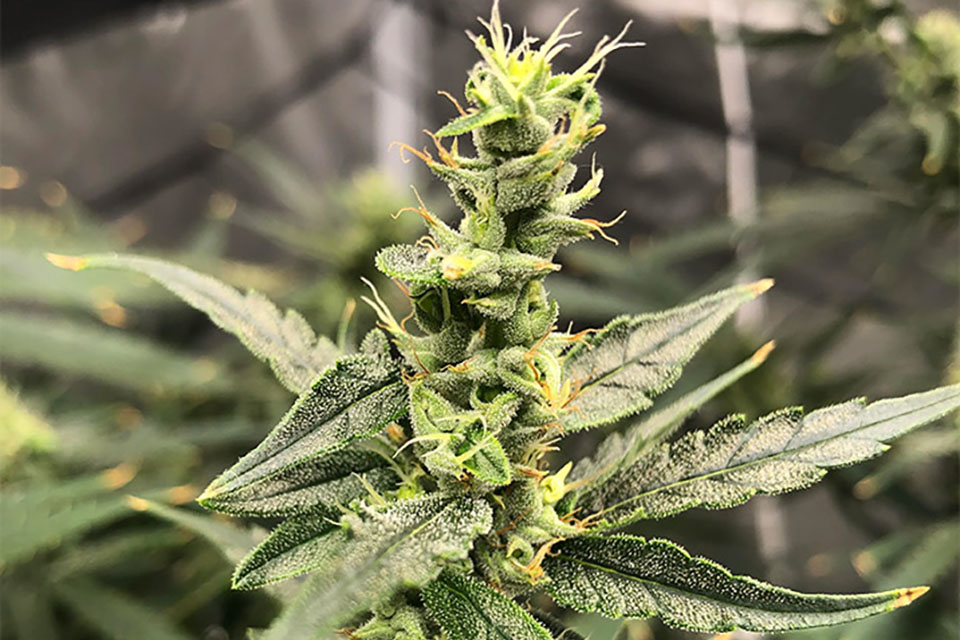
Foxtailing buds in cannabis cultivation has become a hot topic among home growers in the USA. As a phenomenon that can impact flower development and potency, understanding and managing foxtailing buds is crucial for optimal plant growth.


Characteristics of Foxtailing Buds
Identifying the distinctive characteristics of foxtailing buds is the first step toward effectively managing this phenomenon.
Distinctive Features of Foxtailing Buds
Foxtailing refers to the formation of elongated, slender 'tails' that appear to protrude from the main bud of a cannabis plant. These fox-like tails are clusters of new calyxes, the protective casing surrounding the plant's reproductive organs. Unlike the typical, compact, and rounded bud formation, foxtailing buds stand out with their unusual 'spiky' growth. This distinctive pattern, although intriguing, is often a sign of stress or a genetic trait and could potentially impact the quality of the cannabis flowers.
Factors Contributing to Foxtailing in Cannabis Plants
Several factors contribute to foxtailing in cannabis plants, allowing home growers to anticipate and prevent this occurrence. Temperature is one of the primary contributors. High temperatures above 80 degrees Fahrenheit can encourage foxtailing.
Lighting can also play a significant role in foxtailing. Exposure to light that is too intense for the plant can trigger the foxtailing response. Lastly, stress factors such as inadequate nutrition or irregular watering schedules can induce foxtailing.
Impact of Foxtailing on Cannabis Flowers
Foxtailing buds are a negative occurrence for cannabis growers, but there are ways to manage and prevent it.
Effects of Foxtailing on Flower Development and Potency
While the deformation of the traditional bud structure can seem visually intriguing, it could affect the flower's development and potency. Immature calyxes make up the elongated tails of foxtailing buds. This results in a less dense structure than the tightly packed, mature calyxes of a normal bud, leading to a lighter, less potent flower.
Foxtailing can also disrupt the flowering stage of the plant. The continued growth due to foxtailing can lead to an extended flowering phase, affecting the overall yield and cannabinoid content. The long, thin buds produced are often airy and fluffy, which some growers find undesirable and consider a mark of lower quality.
Managing Foxtailing for Optimal Flower Production
The central aspect of managing foxtailing in cannabis plants lies in prevention and early intervention. Good cultivation techniques such as maintaining optimal temperature and lighting conditions, and providing regular, balanced nutrition can minimize the chances of foxtailing. Address the potential stressors causing it to ensure optimal flower production.
However, if your cannabis plant is genetically predisposed to foxtailing, the phenomenon cannot be entirely prevented. In such cases, growers can select strains that are less genetically inclined to foxtail or adjust their growing expectations and techniques to accommodate foxtailing plants. Even if a plant does foxtail, it can still produce quality buds with the right care and management.
Foxtailing Management Techniques
Effective management of foxtailing buds requires strategic planning, careful execution, and adaptability to the unique needs of the cannabis plant.
Pruning and Training Methods
One of the primary preventative methods is pruning and training the cannabis plant to promote good air circulation, better light penetration, and improved overall plant health. Regularly removing excess foliage and training branches can significantly reduce the risk of foxtailing.
Nutrient and Environmental Considerations
In addition to physical training, maintaining balanced nutrients and optimal environmental conditions are crucial in preventing foxtailing. Adequate nutrition and consistent watering schedules can keep plants healthy and resilient, reducing their susceptibility to plant stress.
Kind Seed Co's Approach to Foxtailing Buds
Kind Seed Co's experts take a holistic approach to managing foxtailing, from understanding the plant's genetics to implementing proper cultural practices. Their insight lies in the philosophy that every cannabis plant is unique, requiring a customized approach for each cultivation scenario.
Kind Seed Co believes in empowering home growers with the right tools and knowledge to deal with foxtailing buds. We recommend using advanced lighting systems, organic nutrients, and tailored cultivation techniques for optimal flower production.
The Future of Cannabis Cultivation
Kind Seed Co envisions a future where every home grower can successfully manage foxtailing and other cultivation challenges. The company aims to provide reliable, cutting-edge solutions and knowledge to turn this vision into reality.
Foxtailing buds, although seemingly alarming, are a manageable aspect of cannabis cultivation. Understanding their unique characteristics, the factors contributing to their occurrence, and their effect on flower development and potency can help growers mitigate their potential downsides.






